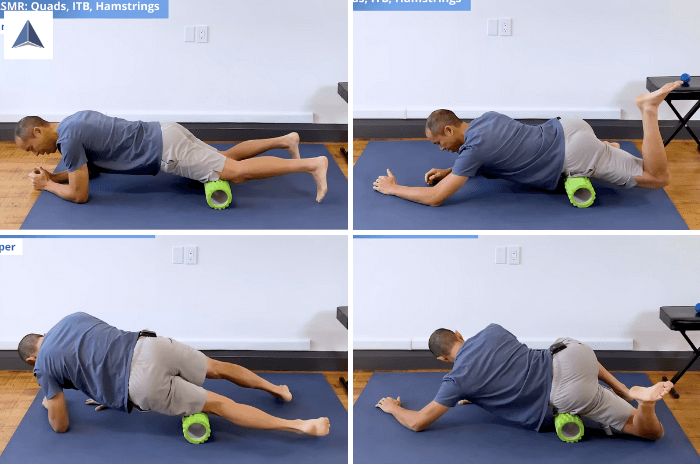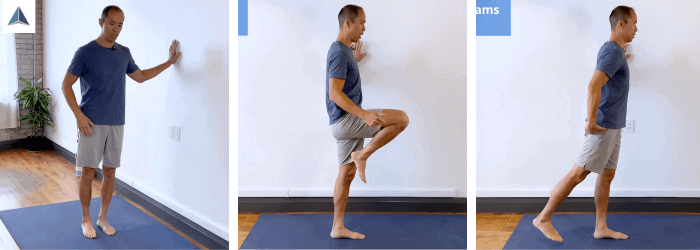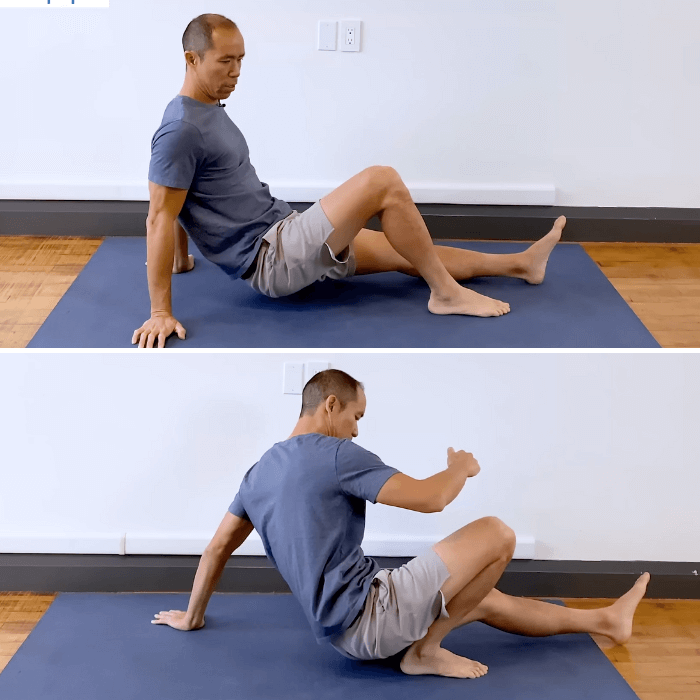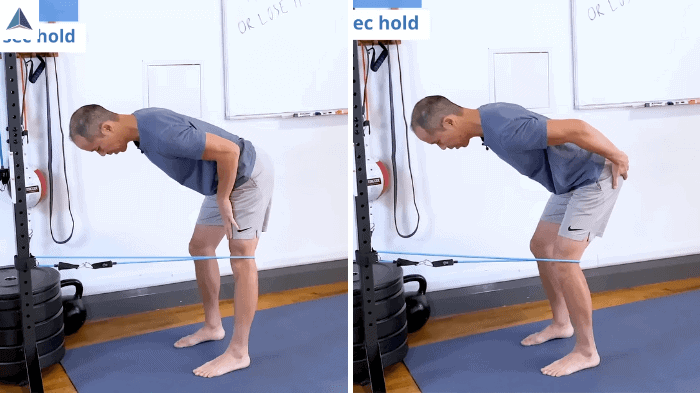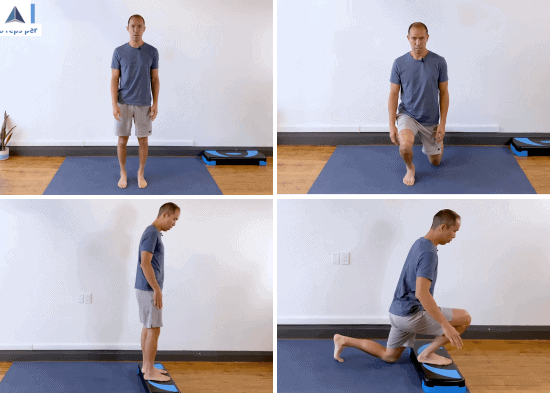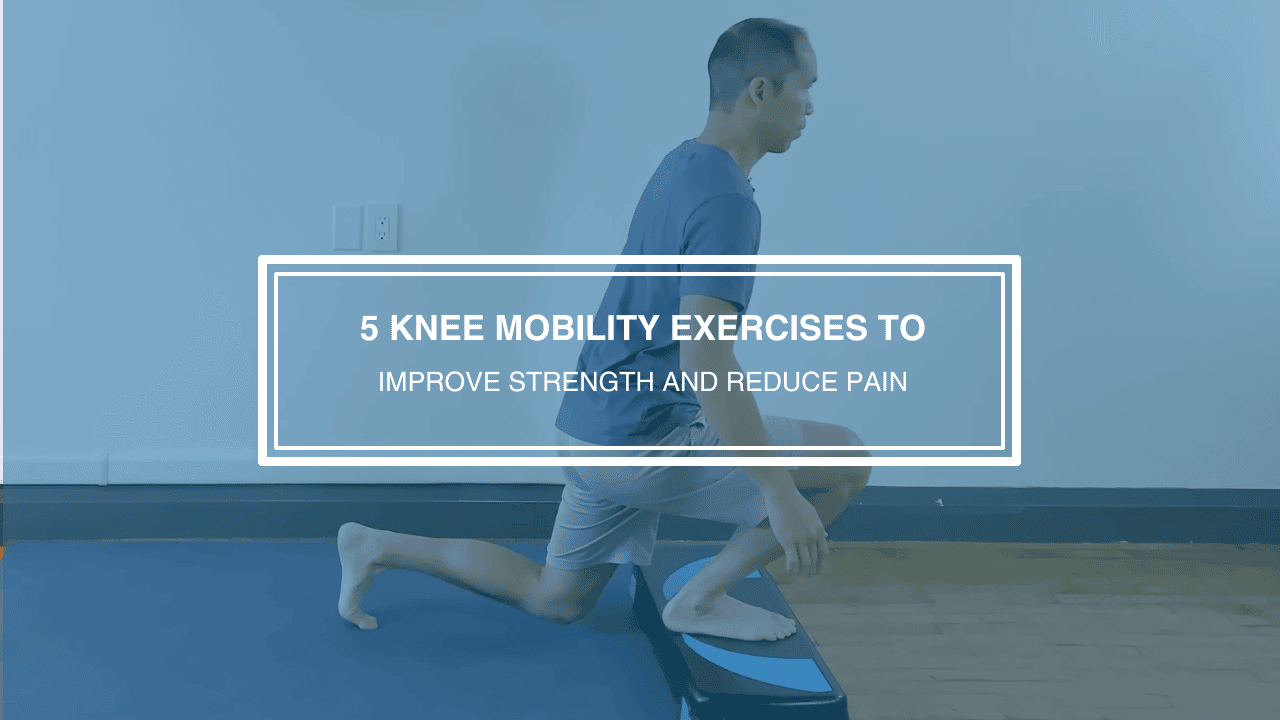
Knees feeling stiff, achy, or like they’re rusting shut? You’re not alone.
Most of us sit too much, stretch the wrong way, or don’t strengthen the right muscles – then we wonder why our knees aren’t moving freely anymore. The good news? You don’t need to live with creaky joints or painful squats.
Let’s walk through five powerful knee mobility exercises that don’t just “loosen things up” temporarily – they actually address the root causes of stiffness, improve your strength, and protect your knees from injury.
But first, we need to bust a common myth…
Why You Should Avoid Static Stretching for Knee Mobility
You’ve probably seen all the usual suspects before: couch stretches, hamstring reaches, heel-to-butt quad pulls. These static stretches might feel good in the moment, but research shows they could be doing more harm than good – especially for your knees.
Here’s why:
- Static stretching decreases your muscular strength and control.
A study published in Frontiers in Physiology found that static stretching reduced muscle strength and rate of force development for up to 20 minutes afterward [1]. That means your muscles respond slower – bad news if you trip, twist, or need to stabilize quickly. - It can strain your passive tissues. Stretching deeply doesn’t just affect muscles. You could also be tugging on cartilage, ligaments, or even a partially torn ACL – structures that many of us don’t realize are already compromised. In fact, a 3.0 T MRI study of 230 knees in adults with no symptoms found that a whopping 97% had structural abnormalities like cartilage lesions, meniscus tears, and early arthritis [2]. Static stretching can aggravate these without you knowing it.
So instead of passive stretching, the smarter way to improve knee mobility is to build strength, control, and pliability – actively.
5 Mobility Exercises for Knee Pain and Flexibility
These five mobility exercises don’t just help you stretch – they actively improve how your knees move by strengthening the muscles that support and protect your joints. By focusing on both mobility and muscle activation, you build resilience that lasts, reducing stiffness and pain over time.
Consistency is key: committing to this routine about three times a week for four weeks will give your knees the best chance to regain their natural range of motion and stability. Stick with it, and you’ll likely notice improvements not just in knee comfort, but also in your overall movement quality and confidence during daily activities.
1. ASMR: Quads, ITB, Hamstrings
The first step to improving knee mobility is loosening up the tissues around your thigh and improving their quality – think of it like giving your muscles a massage. Using active self-myofascial release (ASMR) with a foam roller or massage ball, you don’t just passively lie there. Instead, you engage the muscles while rolling, which helps break up any knots or adhesions and improves pliability.
For the quads and IT band, you’ll roll slowly while bending your knee, activating the hamstrings to provide a dynamic stretch.
For the hamstrings, a massage ball combined with slow knee movement helps release tension while strengthening muscle activation. This approach prepares your muscles and tissues for deeper work, and it’s safer and more effective than typical static stretches.
Muscles targeted:
- Quads (especially rectus femoris)
- IT band region
- Hamstrings (biceps femoris, semitendinosus, semimembranosus)
For Quads + IT Band (foam roller)
- Lie face down with a foam roller just above your knee.
- Roll upward a few inches, then bend your knee – heel to butt – slowly.
- Continue rolling up your thigh as you repeat this motion.
- To get the IT band, shift slightly to the side and repeat.
For Hamstrings (massage ball)
- Sit on a firm surface and place a ball under your hamstrings.
- Press down slightly, then straighten and bend your knee slowly.
- Move the ball to a new spot every 2–3 reps.
- Continue for 1 minute per leg.
2. Hip Flexors + Hams | Glutes + Quads
Knee stiffness often starts upstream – your hips. If your hip flexors and glutes aren’t firing properly, other muscles like your quads and hamstrings end up overcompensating, which leads to tightness and poor knee control.
This standing exercise targets these key muscle groups to restore balance and coordination. You’ll actively contract your hip flexors by lifting your knee, then engage your hamstrings by bringing your heel to your butt.
Next, firing the glutes and quads helps strengthen the muscles that stabilize your knee and hip during movement. This sequence addresses the root causes of knee stiffness by retraining proper muscle activation patterns.
Muscles targeted:
- Iliopsoas (hip flexors)
- Hamstrings
- Glutes (especially glute max)
- Quadriceps
- Stand near a wall for balance.
- Lift one knee as high as possible (hip flexors fire).
- Then, bend the knee – heel to butt (hamstrings fire).
- Contract both muscle groups hard for 5 seconds.
- Then extend the hip and straighten the leg (glutes + quads fire).
- Repeat each combo 4x per leg.
Tip: If you feel the side of your hip working more than the front, externally rotate your knee slightly to better target the iliopsoas.
3. 1-leg Butt Scoot
This fun-sounding exercise is surprisingly effective at building control in deep knee flexion – the position many people struggle with after prolonged sitting or injury. By scooting your butt forward while seated and barefoot, you train your hamstrings and quads to work in this deep bend, while also improving ankle dorsiflexion and foot stability.
Keeping your foot active and your arch engaged during the movement integrates intrinsic foot muscles, which are often neglected but crucial for knee and ankle health.
The 1-leg Butt Scoot builds strength and stability where you most need it for everyday activities and athletic movements.
Muscles targeted:
- Hamstrings
- Quads
- Intrinsic foot muscles
- Glutes
- Ankle dorsiflexors
- Sit on the ground barefoot with one foot flat and your hands behind you.
- Lift your hips and pull yourself forward using your planted foot and hamstring.
- Try to bring your thigh to your calf (deep knee bend).
- Push yourself back out using your foot and leg muscles.
- Repeat 4x per leg.
Want better foot control? Try these foot intrinsic muscle exercises.
4. Hinged Knee Extension w/Band
This exercise blends strength and mobility by targeting your hamstrings and glutes in a lengthened position. Using a resistance band looped just above your knees, you hinge forward at the hips, feeling a stretch through the hamstrings.
Then, by contracting your glutes and actively straightening your knees with your quadriceps, you improve muscle control and joint stability.
Holding this quad contraction while slowly returning to the start position helps train your muscles to work together efficiently, which is essential for preventing knee pain and improving functional movements like walking and running.
Muscles targeted:
- Hamstrings
- Glutes
- Quadriceps
- Anchor a resistance band just above knee height.
- Step into the loop so the band wraps behind your knees.
- Stand shoulder-width, knees slightly bent, and hinge at the hips like a deadlift.
- In the bottom position, contract your glutes and extend the knees fully.
- Hold the quad contraction for 5 seconds, then slowly return.
- Perform 4 reps per leg.
5. Reverse Lunge
The reverse lunge is one of my favorite lower-body exercises because it closely mimics everyday movements like climbing stairs and helps build strength where you need it most. It improves coordination between your hip and knee and builds serious strength in your front leg to stabilize your joints.
When you step back into the lunge, keeping your torso tall and the front heel flat ensures proper alignment. Using a step behind you can increase the range of motion and deepen the stretch on your thigh, but the key is to push up primarily with your front leg to build strength and stability.
This exercise transfers well to sports and daily life, helping you move better and with less pain.
Muscles targeted:
- Quads
- Glutes
- Hamstrings
- Calves
- Hip stabilizers
- Stand tall and step one leg back.
- Keep your torso upright and heel flat on the front foot.
- Lower until your back knee lightly touches the ground.
- Push through the front foot to return to standing.
- Do 6–8 reps per side.
Optional: Use a step to increase range of motion and target the thighs more deeply.
Routine Summary & Recommendations
| EXERCISE | SETS X REPS – HOLD |
|---|---|
| ASMR: Quads, ITB, Hamstrings | 1 min per |
| Hip Flexors + Hams | Glutes + Quads | 1 set x 4 reps per – 5 sec hold |
| 1-leg Butt Scoot | 1 set x 4 reps per |
| Hinged Knee Extension w/Band | 1 set x 4 reps per – 5 sec hold |
| Reverse Lunge | 1 set x 6-8 reps per |
Do this routine 3x/week for 4 weeks, and you’ll not only improve knee mobility – you’ll also strengthen the muscles that keep your joints safe and pain-free.
Final Thoughts: How to Improve Knee Mobility and Stay Injury-Free
Knee stiffness is rarely just a “knee problem.” It’s usually a mix of underused hips, overloaded quads or hamstrings, and outdated habits like static stretching.
But now you’ve got five science-backed, joint-friendly knee mobility exercises you can do at home – with no expensive equipment or dangerous deep stretches required.
Have knee pain? Download the ROM Coach app and do the Knee Movement Painkiller.
You’ll get step-by-step guidance to reduce pain and build long-term joint health using active mobility techniques – no guesswork, no fluff.
Key Takeaways
- If your knees feel stiff or tight, avoid typical static stretches like heel-to-butt or couch stretches – they can temporarily reduce muscle strength and control, increasing injury risk.
- Static stretching may also irritate passive knee tissues (cartilage, ligaments) that often already have unseen damage, so it can worsen joint health.
- Instead, use active mobility exercises that combine muscle activation, strength, and controlled movement to improve knee range of motion safely.
- The five exercises here – active self-myofascial release, hip flexor/hamstring/glute/quad activation, one-leg butt scoot, hinged knee extension with band, and reverse lunge – address key muscle imbalances contributing to knee stiffness.
- Performing this routine three times per week for four weeks can improve knee mobility, strength, and joint stability, helping reduce pain and prevent injury.
- Building hip strength and ankle control is essential to support the knees and maintain functional movement.
References:
[1] Konrad et al., 2022. “The Time-Course Changes in Knee Flexion Range of Motion, Muscle Strength, and Rate of Force Development After Static Stretching.”
[2] “Prevalence of abnormal findings in 230 knees of asymptomatic adults using 3.0 T MRI.”

